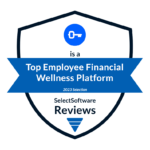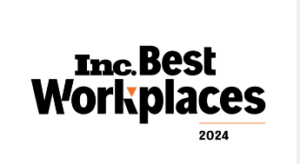Frontline workers have different needs and barriers to achieving financial health and resilience. These are also the employees driving the most organizational cost in terms of turnover, healthcare utilization, missed work, and more.
When you offer a solution specifically designed to improve frontline financial health, your employees’ financial lives improve, and you’ll see it reflected in your ROI. But traditional financial wellness solutions won’t deliver either of those results. Here are 10 key reasons why.
- America’s frontline employees are the most financially vulnerable. Lower-earning employees are more concerned with everyday expenses, debt, and healthcare costs than the rest of the workforce, according to Mercer. Frontline workers need more than financial education, coaching, or a retirement account to solve their problems, particularly as they continue to struggle against financial headwinds including inflation and high borrowing costs.
- The needs of frontline employees are different. Financial wellness solutions don’t offer the products or solutions frontline employees truly need. They often struggle to find affordable borrowing options due to low credit scores and/or low income. Solutions like narrow earned-wage access point solutions and predatory lending products can make them more financially vulnerable and don’t address the root causes of financial sickness.
- Traditional financial wellness benefits are built for people who have money. Only one-third of Americans are financially well, according to the Financial Health Network. Financial wellness solutions are meant for this limited population who want to learn about managing money and growing it further; they have the time, means, and motivation to self-educate, work with a financial planner, and take action.
- Financial coaching, education, and literacy are not real-time or holistic solutions. Frontline employees face financial challenges that are often serious and urgent, such as how to afford a car repair so they can get to and from work. Basic financial knowledge can support their longer-term financial health but does not address immediate needs.
- Typical financial wellness benefits don’t address an individual’s unique circumstances. Many frontline employees have experienced homelessness, addiction, or involvement in the criminal justice system, according to McKinsey. Improving their financial health requires empathic, personalized, and holistic support including financial navigation assistance that connects them with other employer benefits like an EAP and/or resources for necessities including affordable housing, utilities, and food.
- Common financial wellness benefits don’t address frontline financial stress. The strain of chronic financial stress disproportionately impacts frontline workers’ physical and mental health. Without a trusted partner who can offer real solutions for their urgent money needs and help them take steps to improve their financial lives, employees’ stress levels won’t improve – and you won’t see ROI from the benefit.
- Frontline employees require sensitivity when dealing with money. There is a stigma and sense of shame that can come with being financially vulnerable. Frontline employees won’t use a resource that makes them feel judged. Typical financial wellness solutions don’t offer the empathetic, human-led approach frontline employees need to believe they can be honest about their financial situation.
- Traditional financial wellness solutions don’t consider the big picture. Frontline employees often have complex situations that impact their financial lives (such as legal issues, caregiving responsibilities, and medical needs) that must also be addressed to improve financial health.
- Financial wellness solutions address specific topics. Frontline employees have financial needs that don’t fit into categories such as financial planning, budgeting, or retirement. If their primary concern is to catch up on late car payments so it isn’t repossessed, a financial wellness solution won’t help them.
- Typical financial wellness strategies don’t connect frontline employees with non-toxic products or resources that improve financial health. Many frontline employees qualify for free resources, benefits, or grants such as rent assistance, reduced utility bills, and free childcare, but don’t how to find or apply for them. Traditional financial wellness solutions may provide loans or early wage access, but these products aren’t necessarily intended to improve frontline financial health and can compromise it further. Connecting employees with free resources and non-toxic financial products can help frontline employees drastically reduce their financial strain and improve their financial health, but that doesn’t fall within the scope of what a financial wellness solution does.
Brightside Financial Care is the only model built to improve frontline employee financial health and deliver employer ROI. It’s why customers like Amazon and Unum trust us to support their frontline employees. To learn more, click here.





